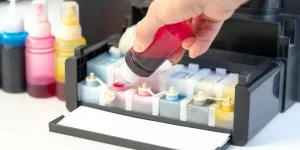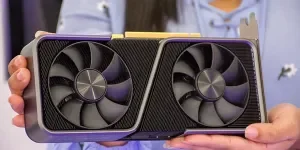If consumers have ever cursed at their printer for running out of ink at the worst possible moment, they’ll probably appreciate what smart tank printers bring to the table. They’re a solution to some of the most annoying issues with printing. Instead of messing around with cartridges that run out after a few dozen pages, these printers use refillable ink tanks.
It’s like having a giant reservoir of ink that consumers can refill as needed. Some of these machines can handle 7,000 pages in black and white or even more in color before you even need to think about refilling. If consumers run a small business or print a ton of homework for the kids, that’s a game-changer.
This article will explore various features to consider before adding smart tank printers to your inventory in 2025.
Table of Contents
A quick look at the printer market
What to consider when choosing smart tank printers
Final thoughts
A quick look at the printer market
The global printer market is booming, thanks to being one of the most popular devices worldwide. The market crossed the US$ 50 billion mark in 2023, and experts predict it will hit US$ 71.04 billion by 2030 at a 4.7% compound annual growth rate (CAGR). In addition to being popular, the market is experiencing innovations (like smart tank printers) that help increase demand and profitability.
Regionally, Asia Pacific holds a big slice of the market pie (about 29.8%). However, experts say North America will register the fastest growth (4.1% CAGR) thanks to increasing demand and strong economic performance.
What to consider when choosing smart tank printers
Picking the right printer starts with figuring out how consumers will use it. Not everyone has the same needs, and the last thing they want is to end up with something overkill—or worse, something that can’t keep up.
1. How often would consumers print?

Is the buyer persona the kind of person who prints a few things here and there, or are they cranking out page after page every day? They’ll want a printer built for heavy use if it’s the latter. Depending on the model, most smart tank printers can handle between 5,000 and 20,000 pages monthly.
That might sound overkill, but it can be a lifesaver for a small business or a teacher printing out assignments. On the flip side, if they’re just printing the occasional form or school project, they probably don’t need something quite so industrial.
Note: Take HP, for example. Its smart tank printers have more than enough ink (up to two years’ worth) to handle high-volume printing.
2. How much does speed matter?

Not everyone can patiently wait for their document to print. So, if target consumers are always in a hurry (or just impatient, like most people), print speed is something to pay attention to. Most models can print black-and-white pages at around 10 to 15 pages per minute (PPM), which is fine for everyday use.
However, if consumers have a large stack to process, they’ll need something faster. They will look for models that can reach closer to 30 PPM. Nevertheless, color prints will always be slower than B/W. For this reason, expect things to be a little slower, maybe around 5 to 10 PPM.
3. Print quality

Here’s where things get a little more specific. If the target consumer mostly prints out text, they don’t need anything fancy. A 1200 x 1200 DPI resolution is enough to make their documents look crisp and professional.
But if businesses target photographers or consumers printing something visual—say, brochures or posters—they’ll want a printer with a higher resolution, like 4800 x 1200 DPI. This makes a huge difference in photo quality.
4. Cost-effectiveness

This feature is one of the best parts of smart tank printers: They save consumers a lot of money in the long run. Ink bottles are cheaper than cartridges and last forever—well, not literally forever, but you get the idea.
A single black ink bottle might cost US$ 15 to US$ 20 and print 6,000 pages. That’s like US$ 0.0025 per page. Compare that to cartridges, which can cost five times as much, and it’s easy to see the appeal.
Note: Many of these printers come with a full set of ink bottles in the box—enough to last consumers a year or more.
5. Is it easy to use?

Here’s where modern printers shine. Most are super simple to set up and work seamlessly with different devices. Do consumers want to print from their phones? That’s not a problem. Many models have Wi-F or Bluetooth and even support apps like Google Cloud Print and Apple AirPrint.
Some of the newer ones even work with smart home assistants like Alexa. Imagine saying, “Alexa, print my calendar,” and it’s done before consumers can pour their coffee. Additionally, most smart tank printers come with simple installation manuals (online and physical) to make the process even easier.
6. Do consumers need extra features?
A basic model will work fine if consumers are just printing. But an all-in-one printer might be worth it if they’re scanning, copying, or faxing (yes, some people still fax). Many models include these features and handy extras like automatic document feeders (ADFs) that let users scan or copy multiple pages at once. Anyone who has ever had to do this manually will know why that’s such a big deal.
Final thoughts
It all comes down to what consumers need. If they’re tired of constantly buying cartridges and want something easy to use, cost-effective, and reliable, a smart tank printer is a great investment. Just take the time to figure out the target audience’s priorities—speed, quality, or features—and pick a model that fits the bill.




